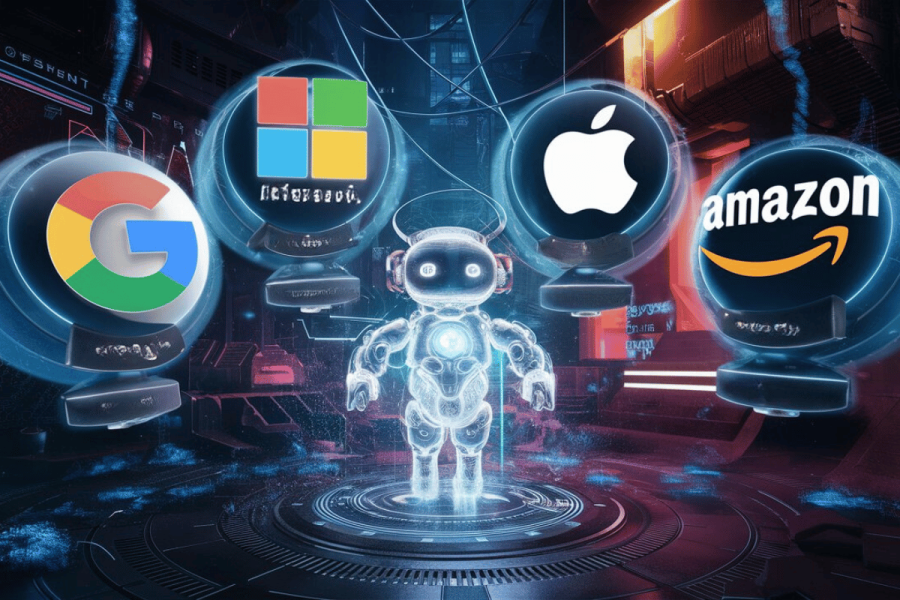If your business needs servers to operate (which it likely does), you’ll face an important decision. Do you establish and maintain physical servers or utilize virtual servers for your ongoing needs? Each approach has its unique strengths and weaknesses – but how should you think about them in the context of your business’s ongoing operations?
The Basics of Server Virtualization: Physical vs. Virtual vs. Hybrid Servers
Let’s start by defining server virtualization and discussing the primary differences between physical and virtual servers.
A physical server is a piece of hardware with a motherboard, a central processing unit (CPU), accessible memories, and various other components. This is sometimes called a bare-metal server because the hardware is used by an operating system (OS) directly, rather than utilizing a virtualization platform. A physical server will run a single instance of an operating system like Windows or Linux, and it often runs only a single application.
Through the use of server virtualization, it’s possible to use a physical server to create multiple virtual servers. A virtual server is a type of virtual machine that exists only in software form; it’s a piece of software that represents a physical server, using elements like CPU, memory, and storage only in the abstract.
It’s also possible to use a hybrid approach, utilizing both physical and virtual servers as part of your IT architecture.
Historically, physical servers were the only realistic option for IT teams – but that all changed in the early 2000s when virtualization layers made it possible to run multiple operating systems and applications using physical hardware as a base.
No matter what, it’s important to have a management strategy in place. Server management services for physical hardware, virtual machines, and hybrid servers are indispensable for practicing effective management.
The Pros and Cons of Physical Servers
Should your business use physical servers?
There are some advantages to using physical servers, like:
Full access, 24/7/365
Some business owners like to have physical servers on site because it grants them full access, 24/7/365. Instead of having to mediate a virtualization layer, you can physically access your own servers at any time.
Convenient locations
With a physical server, you can choose exactly where you want it to exist. You can have it in a primary location for your business or have your servers accessible in a shared location with servers managed by other business owners. Either way, you’ll have convenient access whenever you want it.
Full customization and configuration options
These are your servers, and they exist in a physical capacity, so you can customize and configure them however you want. You’ll have significant flexibility with virtual servers as well, but there’s no matching the unlimited potential of physical servers.
More power
Remember, virtual servers still rely on physical hardware. A single physical server can potentially support many different individual virtual servers. Accordingly, the power of a physical server is often fragmented when running multiple virtual servers. This isn’t always an issue, but if you have an application that demands considerable power or requires more dedicated resources, physical servers are a must.
However, there are some disadvantages to using physical servers exclusively.
Expensiveness
It’s undeniable that physical servers are more expensive than virtual servers, for obvious reasons. You’ll have to pay more for the hardware upfront, you’ll pay more in energy costs, and you’ll be forced to conduct more maintenance to keep these servers operational. There are some cases when this extra money is worth it, but it’s still a factor to consider.
Floor space
If you want to host your own physical servers, you’ll need floor space to do it. This can be a massive burden for some businesses. Even if you’re sharing a space with another business, the costs and management requirements can be prohibitive.
IT team needs
Generally, if you want to keep your physical servers up and running, you need an in-house IT team to take care of planning and management. If you don’t already have talented IT experts in place, you’ll need to recruit them. Even if you do have them, you’ll need to pay for them, driving up the costs even further.
Scalability issues
As you might imagine, virtual servers are better for scalability, since they offer more flexibility and more options for modular growth. If your business is interested in scaling, physical servers are going to pose additional challenges.
Configuration difficulties
You can customize and configure your physical servers however you want, but that doesn’t mean this is easy. Even experienced tech workers sometimes struggle to configure physical servers properly, since the process is more complicated.
Energy demands
If your business is attempting to operate as sustainably as possible, you may also have concerns about the energy demands of physical servers. Because these servers are more resource intensive, they’re arguably less sustainable.
The Pros and Cons of Virtual Servers
Now let’s look at some of the advantages that virtual servers offer.
Fewer upfront costs
If your company is on a budget, virtual servers are immediately going to be more appealing to you since they are associated with fewer upfront costs. You won’t have to buy the hardware yourself; if you take advantage of server virtualization services, you can rely on another entity’s physical servers for your virtual servers, which is usually far cheaper than buying and configuring your own.
Lower lifetime costs
Similarly, virtual servers are associated with lower lifetime costs. They’re less energy intensive, they’re easier to manage, and they don’t require intensive maintenance and administration.
Easy configuration
In most cases, people find virtual servers much easier to configure than physical servers. There may not be quite as much flexibility, but the configuration options are simpler and easier to understand.
Reduced labor needs
If you’re trying to operate as lean as possible, and you aren’t sure if you can afford the staff necessary to run physical servers, virtual servers are an attractive option. You’ll save significant money on labor costs.
Server consolidation and efficiency
Virtualization allows you to use each physical server to its fullest potential. Instead of relying on only a single operating system and a single application, a physical server can be utilized to support many different virtual servers simultaneously.
Environmental sustainability
Virtual servers are arguably better for the environment since they consume less energy and can operate more efficiently.
Better disaster recovery
Virtual servers also lend themselves to smoother, more straightforward disaster recovery – especially if you’re working with a vendor that can assist you with risk mitigation.
But of course, there are some disadvantages to note as well.
Dependency on services
If you want to virtualize your servers, you’ll probably be dependent on external vendors and services. Businesses that have a vested interest in maintaining total control and transparency may view this as a severe limitation.
Inaccessibility
Resolving issues with virtual servers is sometimes easier because issues can be resolved virtually. But it also means the physical server isn’t always easily accessible for troubleshooting.
Compatibility issues
In some cases, virtual servers can produce application compatibility issues. With proactive planning, this can be mitigated, but it’s still a disadvantage worth noting.
Restrictive service agreements
Signing a service agreement with a vendor can sometimes be restrictive, locking you into years of service or limiting you in terms of capacity. This downside can be easily managed by being more discerning with your service providers.
Which Is Right for Your Business?
So which is right for your business: physical servers or virtual servers?
As we’ve seen, both physical servers and virtual servers have something to offer, with virtual servers being leaner and more efficient, and they’re more powerful and more customizable. For many businesses, the best approach is a hybrid one, utilizing both physical and virtual servers to their greatest potential. For other businesses, the decision comes down to your unique business challenges.










